Interview With Award-Winning LDS Painter Howard Lyon
LDS.net had the opportunity to sit down with Howard Lyon, an LDS artist whose works have been featured in the Mesa Arizona Temple and in the Liahona. He’s also done lots of fantasy work and has illustrated Dungeons and Dragon’s books and World of Warcraft cards as well as illustrating for Magic the Gathering and Star Wars.
LDS.net: Tell me about your art.
Howard Lyon: I think that art is one of the great things that separates us from the natural man. You know, when we create a work of art that exhibits skill and dedication and a desire to create something beautiful…while it doesn’t last forever, it can last a very long time and reach a lot of people. Even in my fantasy art my goal is to create something beautiful. Even if I’m painting a dragon, I want to make something that is inspiring because [of its] beauty.
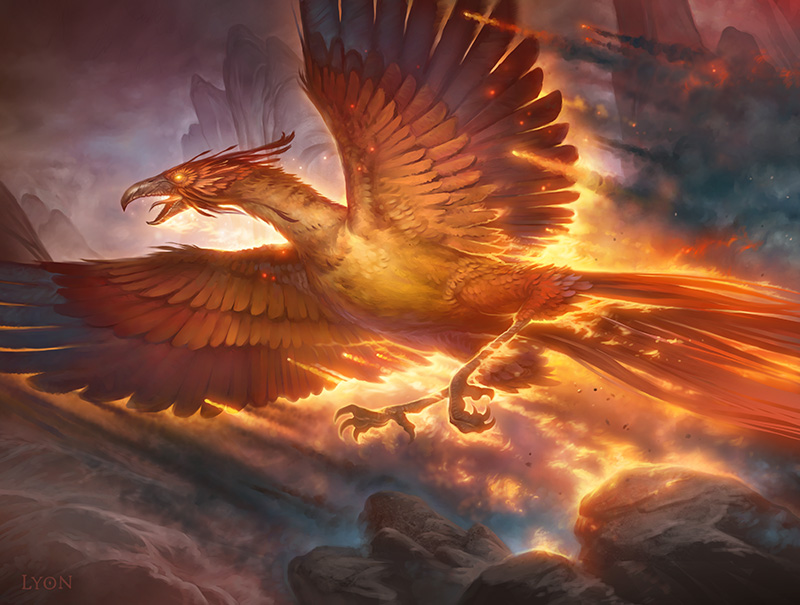
One of my favorite artists, William Bouguereau, related to his students that, “Beauty is truth and that truth is the closest that we can get to God.” I believe that. I think that so much of the world can get caught up in corrupting beauty or taking something that is pure and corrupting it. But if we seek after beauty in our lives, we can be unaffected by a lot of the ugliness in the world.
LDS.net: So, how do you think you’ve been able to seek after beauty in your art?
One of the ways that I try and do that is I study the artists that have come before me and I try and figure out what they’re doing. Like how they’ve been able to create something that speaks that way. For instance when I look at the Winged Victory of Samothrace in the Louvre. It’s so perfect, the proportions, the anatomy, and the way it was carved. There’s nothing I would change on it. And in that sense it’s beautiful. It’s a beautiful piece of stone that someone transformed. When I look at paintings like that or sculptures like that, there’s a sense of proportion or design that speaks to us.
I also think it’s eliminating things that degrade or put down. I think, like I was saying, a powerful way to find that out is to study the great paintings of the past that have held up over time and then study nature itself. As we go out into nature, we see this great dichotomy of plants that grow in layers and then die. They show you all the proportion that nature has to offer. That creates a sense of beauty. Trees have a proportion to how they grow with the leaves and branches. It stands out if someone hasn’t studied nature and made those observations. You can really tell when someone has, the tree just has a beauty to it that is missing if someone is making up what they think a tree looks like.
LDS.net: What you said about the Winged Victory of Samothrace made me think of Michelangelo. He said of the David, “I saw the angel in the marble and carved until I set him free.” Do you feel like that applies to your art in the religious aspect?
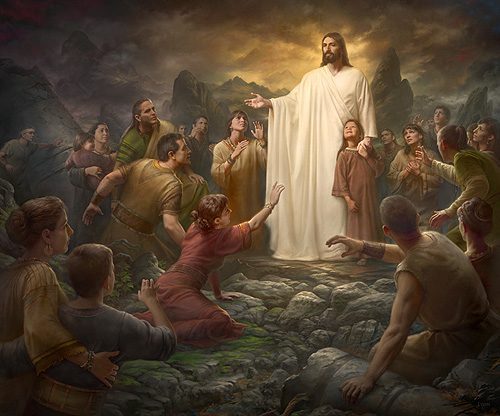
It’s interesting because sometimes it will take a while for me to hunt around for the composition. That’s usually the hardest part of anything. Where to put the proportions, where to put the right shape the right line placing characters within the composition.
Sometimes when I’m working on a painting, I will even have this pit in my stomach or an unfulfilled sensation. Once [the painting’s done], there is the most satisfying feeling. It’s like all of the pieces have fallen into place and it feels right. I think that comes from a couple things. It comes from experience of having studied and worked and done lots of paintings. It also comes from our spirit. It [also] comes from an awareness when we seek after truth, Heavenly Father helps us find that.
I think there are proportions, ratios, and compositions that people respond to and that are more fulfilling. Sometimes we’re aided in our effort to make something beautiful by being given that feeling of “ah, this is correct, this is right in this placement.” At least for the understanding for that [artist] at that point. I think of that clarification because saying “Yeah I think that the spirit told me to put it here” would be incorrect. Just because it’s right for one artist doesn’t mean it’s right for everybody.
LDS.net: Elder Hales spoke last conference and said, “I remind all of us that the Holy Ghost is not given to control us. Some of us unwisely seek the Holy Ghost’s direction on every minor decision in our lives. This trivializes His sacred role. The Holy Ghost honors the principle of agency. He speaks to our minds and our hearts gently about many matters of consequence.”
I remember that. It’s like something resonates. Where before there was discord, suddenly there’s harmony. When you find that harmony, it’s just right. It’s in the right place. Like I said, there’s experience and learning that plays in that but I think our spiritual side is a part of that as well.
LDS.net: Is criticism important in art? Does it help you improve? If it is, what’s the best piece of criticism you’ve been given?
That’s a tough question. The first part of the question is, Yes criticism is very important in art. I don’t subscribe to the idea that anything anyone does is art. …so the modern art field is a strange one. Unfortunately [some art departments get] involved with this idea where if someone says it’s art, it is. If someone says it’s plumbing but it doesn’t work, I don’t consider it plumbing. I think the art that will stand the test of time will take a degree of skill and it’ll be recognizable.
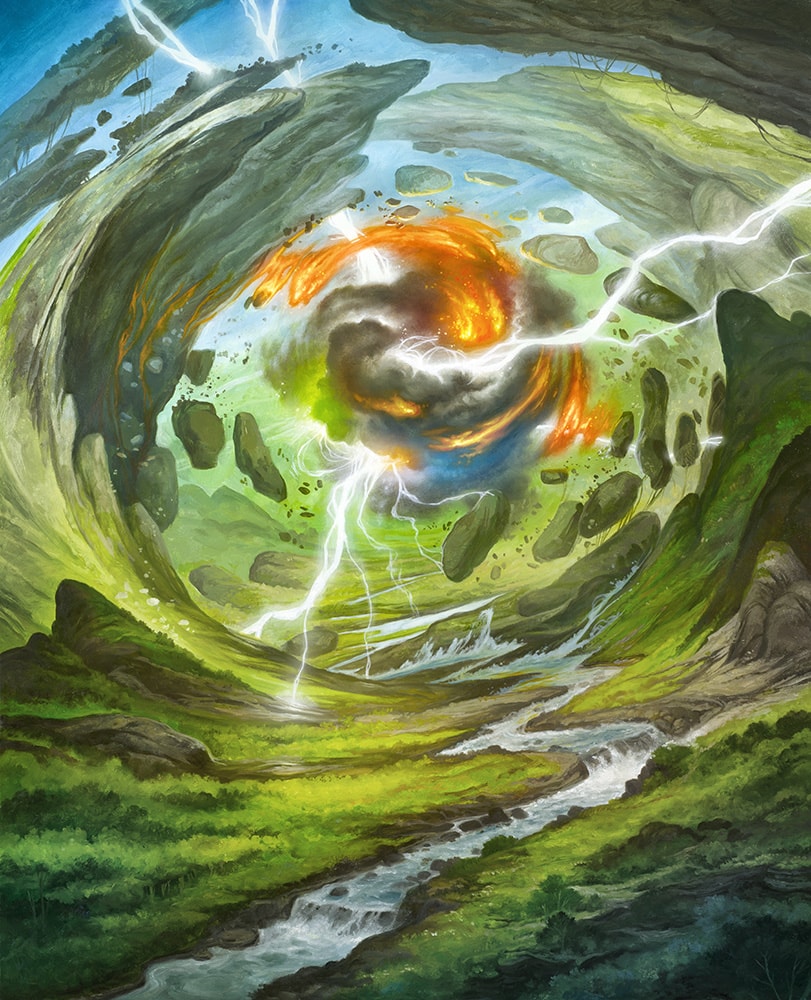
I think as far as criticism goes, I don’t think you’ll improve as an artist unless you’re sincerely open to criticism of your work. If you’re not able to compare your own work to those of the artists you admire and recognize where you’re falling short, you won’t ever be able to stand up to their art.
There’s a lot of artists I admire like Bouguereau, John William Waterhouse, and Frederic Leighton. When I hold my work up next to theirs, I come up pretty short. It serves as a foil to help me know where I can improve. There are artists who are very good and who have stopped seeking to improve and just seek to create more works of art.
That’s fine, but my biggest motivation when I start a painting is how I’m going to be better. Sitting down and working hard every day fuels me the most. When I can see that I’ve improved or become better at something, like the ability to paint flesh, that’s what gets me very excited to keep going and come back into the studio the next day.
LDS.net: What it’s sounding like to me is that you just keep trying. Keep pushing through, listen to what other people have to say and value their criticism for what it’s worth to you. Do you feel like these principles are applied in your life?
For sure. It almost feels like in some areas of life, it’s a little harder to do, but I think everyone has people in their lives that show [them] goodness. They’re so consecrated in their lives towards God and his desires.
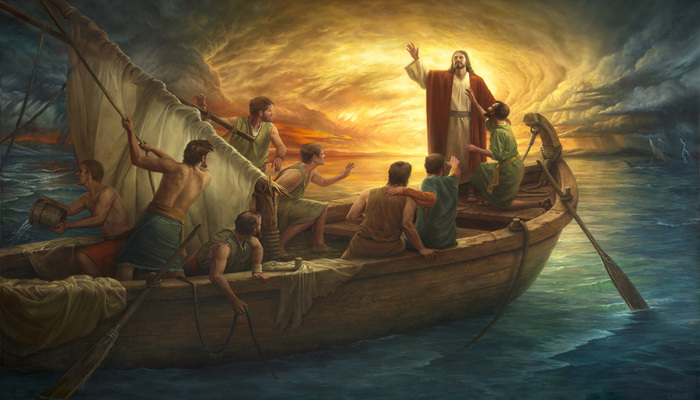
It’s easy for us to say I need to go to the temple more, I need to be more diligent in my scripture study, or I need to be more patient. And sometimes it’s easy to get down on ourselves because of that. The key to Salvation, eternal life, or success is being able to recognize that we’re pointed in the right direction. That we’re making that effort to improve even if we’re not where we want to be or where we know we should be.
On an eternal scale, if you’re making progress in any direction that’s pointed up, that’s pointed to God, even if you’re 89 degrees you’re still headed in the right direction. I know people who are pointed directly [up]. Some to the side. I feel like I wander way off to the left or the right and I have to come to the center. Hopefully I’m never pointed away. Hopefully I’m pointed in the right direction from an eternal scale.
LDS.net: So, any progress is progress. But some people say, “I’m not making it all the way, so I’m going to stop trying.”
Yeah. If you have a horizon line and you make an angle that comes up off the horizon line even one degree [and] carry that line out through eternity, it’s effectively the same as the line that’s pointed straight up. It ultimately reaches the same point as the straight line. I think in the next life some people will advance in their understanding of what it means to be Heavenly Father faster than others. But that doesn’t matter. It’s not a race against any other person. What matters is that we finish where we need to be.
LDS.net: Do you have a favorite piece you’ve created?
My favorite religious piece is a tie between I Am a Child of God and Though Your Sins. Child of God was so fun to paint. We had all of the kids come into the studio and pose one by one. They’d come in and they’d either be real shy or kind of rambunctious. You know, just kids. Bouncing off the walls sometimes.
But then we’d tell them what the painting was supposed to be. I’d say, “You’re going to be standing next to Christ and testifying that you’re a child of God. He’s going to be standing there bearing the same testimony that He’s a Child of God. You’ll both be bearing [the same] testimony. They would just change.
Some of them would look very proud, some very happy, some very sober but all very real. Even the little kids would have a change of expression. It was really neat to be a part of. It’s cool to look at that piece because I had an experience with each of those kids. And my three kids are in the back row of that painting. It was cool to put them in.
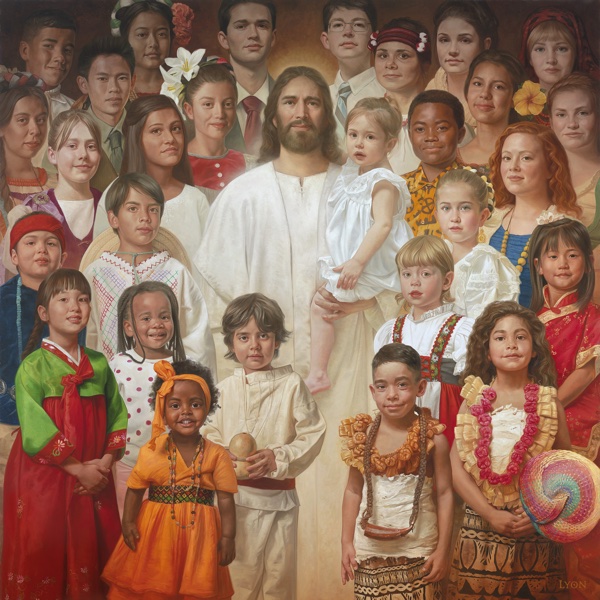
The other painting that I feel like I really relate to is the one of the woman taken in adultery. (Though Your Sins) Because, while her sin was grievous she represents all of us being brought before Christ. Having Christ turn to her and say “neither do I condemn you, go and sin no more,” leaves a message of great hope. He showed her great compassion and saved her from being stoned to death. Then he saved her from a spiritual death, which only Christ can do by extending the Atonement to her. To me, that story encapsulates Christ’s gospel. No matter what we’ve done, there’s hope and mercy. When we approach Christ, we’ll receive both.
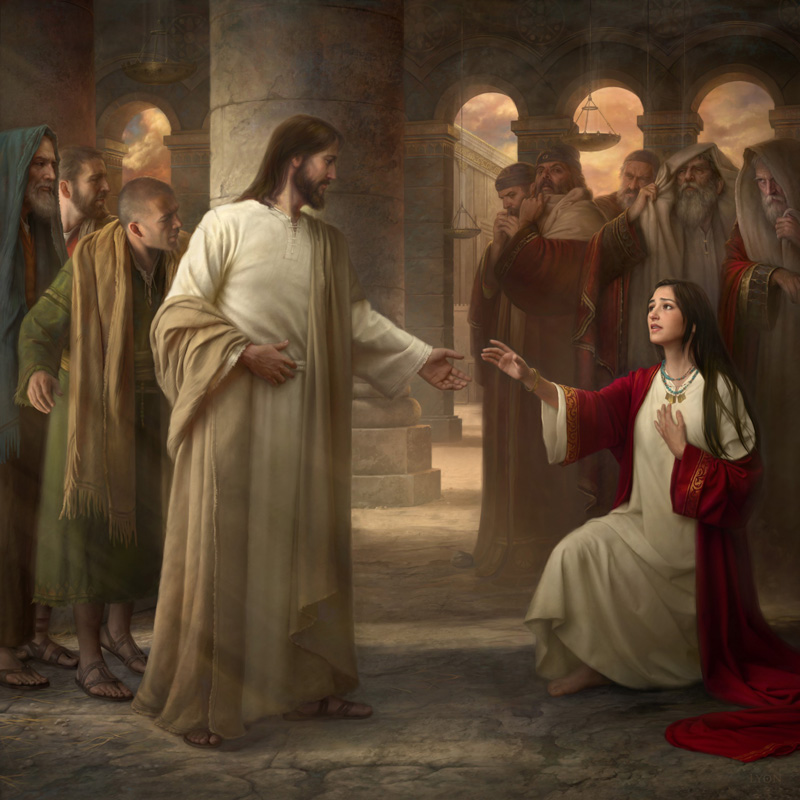
LDS.net: It sounds to me like your art has been a vehicle for your spiritual growth and your progression to becoming closer to Heavenly Father. Is that true?
It’s very much true. I think before I started painting religious pieces, I would maybe study an idea or principle for the length of a gospel doctrine class or maybe my own personal study. I’d ponder in the temple or wherever that might be. But when I work on a painting, I might work on it for 2 months. Doing preparation, study, gathering reference drawings, and then the painting itself. I might be studying that principle or the story behind that painting for 10 hours a day.
While I’m working on it, [I’m] thinking about how I’d convey it or what symbolism will be on there. When I’m doing that I have a depth of comprehension or understanding about it that I don’t otherwise have or that I haven’t achieved otherwise. I feel like I can relate to the woman at the well or Christ at Gethsemane better than I did before after painting them. Not that I have some better understanding than someone couldn’t otherwise gain, but on a personal level, I feel like it’s deepened my understanding.
LDS.net: You can see that there’s a lot of thought, effort, and understanding poured into each piece. What would your parting words be to anyone reading this article? What would you like them to know?
You know, I think that when we live in a [difficult] world, especially what we’ve seen with a lot of the terrorist attacks that happened recently and with the presidential election. With the options that we have as candidates. It has become very easy to be cynical. I think that cynicism poisons our happiness. I think that we have to fight against becoming cynical.
We can look at the idiosyncrasies in our church or outside of it that we have and not become cynical. I hear people within the Church become cynical, they become cynical with all of the negativity in the world, and it deprives them of the opportunity to be happy in situations that would otherwise be filled with optimism and opportunity. So, that’s something that I strive for in my own life in all of my relationships.
Be optimistic, even when terrible things are happening and our [political] leaders aren’t going to be representative of our beliefs and wants and needs, that there’s still room to be positive and optimistic. That will do more for our well-being and our neighbor’s well-being than any cynicism will ever bring. It’s good to be aware and critical. It’s always better to assume the best rather than the worst.
Allow someone to do something for the right reason and don’t assume that they might be doing it for the wrong reasons or for selfish reasons. That leads to complacency and selfishness in our own actions. If we feel like others are doing things just for themselves or for ulterior motives, it makes it harder to do things in our own lives.
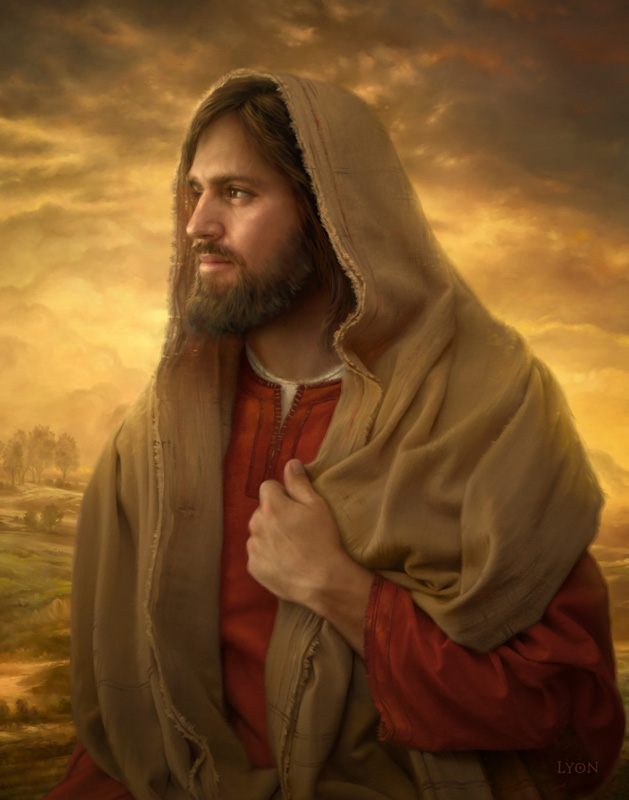
Be sure to check out Howard’s art at howardlyon.com and on Instagram.


